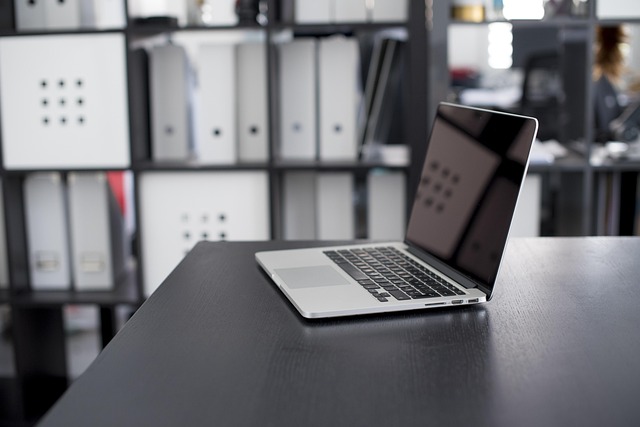Choosing the Right Office Furniture for Comfort and Productivity
Office furniture plays an important role in making a workspace comfortable and organized. Learning about different types of desks, chairs, and storage options can help people set up a space that supports focus, reduces strain, and keeps work areas tidy.

Understanding Ergonomic Chairs and Their Impact
Ergonomic chairs represent one of the most important investments for any workspace. These specialized seating solutions are designed to support the natural curvature of the spine and promote proper posture during extended periods of sitting. Key features to look for include adjustable seat height, adequate lumbar support, breathable materials, and armrests that can be positioned to keep elbows at a comfortable 90-degree angle. Some ergonomic chairs offer additional customization options like adjustable headrests, seat depth, and tension control for reclining. The benefits extend beyond comfort—research suggests that ergonomically designed chairs can reduce back pain, decrease fatigue, and potentially lower the risk of developing musculoskeletal disorders associated with prolonged sitting.
Selecting Office Desks That Enhance Workflow
Office desks serve as the foundation of any workspace, directly influencing organization and workflow efficiency. When selecting an office desk, consider both dimensions and functionality. The desk should provide adequate surface area for essential equipment while leaving room for writing and other tasks. Height is particularly critical—ideally, when seated, your arms should rest comfortably on the desk with elbows bent at approximately 90 degrees. Standing desks and height-adjustable models have gained popularity for their ability to reduce sedentary time and provide flexibility between sitting and standing positions. Features like built-in cable management systems, drawer storage, and keyboard trays can further enhance functionality and maintain a cleaner, more organized workspace.
Implementing Office Storage Solutions for Organization
Effective storage solutions are fundamental to maintaining an organized and efficient workplace. From filing cabinets to shelving units, proper storage furniture helps reduce clutter and creates systematic access to important documents and supplies. Vertical storage options like bookcases and wall-mounted shelves maximize floor space in smaller offices. Mobile pedestals that fit under desks provide convenient access to frequently used items while saving space. For collaborative environments, consider modular storage systems that can be reconfigured as needs change. Well-planned storage not only improves visual aesthetics but also reduces time wasted searching for materials and helps maintain mental clarity by minimizing visual distractions that can impede concentration and productivity.
Workplace Productivity Furniture Beyond the Basics
Beyond standard desks and chairs, specialized workplace productivity furniture can address specific needs and enhance efficiency. Collaborative furniture like conference tables, modular workstations, and breakout area seating facilitates teamwork and communication. Privacy pods and acoustic furniture provide quiet spaces for focused work in open-plan environments. Accessories such as monitor arms improve ergonomics by positioning screens at eye level, while keyboard trays promote proper wrist positioning. Sit-stand converters offer flexibility for existing desks without replacing entire workstations. Task lighting reduces eye strain and improves visibility for detail-oriented work. These complementary furniture pieces can significantly enhance workplace functionality and address specific productivity challenges within various work environments.
Modern Office Setups for Contemporary Workspaces
Modern office setups reflect evolving work styles and technological integration. Today’s workspaces often feature flexible layouts that accommodate both collaborative and individual work. Materials like glass, metal, and sustainable wood create contemporary aesthetics while potentially improving environmental quality. Technology-integrated furniture—including desks with built-in charging ports, conference tables with embedded connectivity, and media walls for digital collaboration—streamlines workflow and reduces cable clutter. Biophilic design elements that incorporate natural materials and plants have been shown to reduce stress and increase productivity. Modular furniture systems allow for easy reconfiguration as team sizes and project needs change, making modern office setups adaptable to the dynamic nature of contemporary work.
Cost Considerations and Investment Value
Office furniture represents a significant investment that balances immediate costs against long-term benefits. Quality ergonomic chairs typically range from $200 to $1,500, while standing desks can cost between $300 and $2,000 depending on features and materials. Storage solutions vary widely, with basic filing cabinets starting around $100 and comprehensive systems reaching several thousand dollars. When evaluating costs, consider durability, warranty coverage, and potential health benefits that reduce absenteeism and healthcare expenses.
| Furniture Type | Entry-Level Cost | Mid-Range Cost | Premium Cost | Average Lifespan |
|---|---|---|---|---|
| Ergonomic Chairs | $200-$350 | $350-$800 | $800-$1,500+ | 7-10 years |
| Height-Adjustable Desks | $300-$600 | $600-$1,200 | $1,200-$2,000+ | 10-15 years |
| Filing Cabinets | $100-$200 | $200-$500 | $500-$1,000+ | 10-20 years |
| Modular Storage Systems | $400-$800 | $800-$2,000 | $2,000-$5,000+ | 10-15 years |
| Conference Tables | $500-$1,000 | $1,000-$3,000 | $3,000-$10,000+ | 15-20 years |
Prices, rates, or cost estimates mentioned in this article are based on the latest available information but may change over time. Independent research is advised before making financial decisions.
Creating a Cohesive Furniture Plan
Developing a comprehensive office furniture plan requires balancing functional needs, spatial constraints, and aesthetic considerations. Begin by assessing workflow requirements and identifying essential activities that the space must support. Measure available areas carefully, allowing adequate clearance for movement and accessibility. Consider the relationship between different work zones and how furniture placement can facilitate natural transitions between collaborative and focused work. Color schemes and material selections should reflect organizational culture while supporting psychological comfort. Prioritize adjustability and adaptability where possible to accommodate diverse physical needs and changing work requirements. A well-designed furniture plan anticipates future growth and technological changes while creating an environment that employees find both practical and inspiring.




